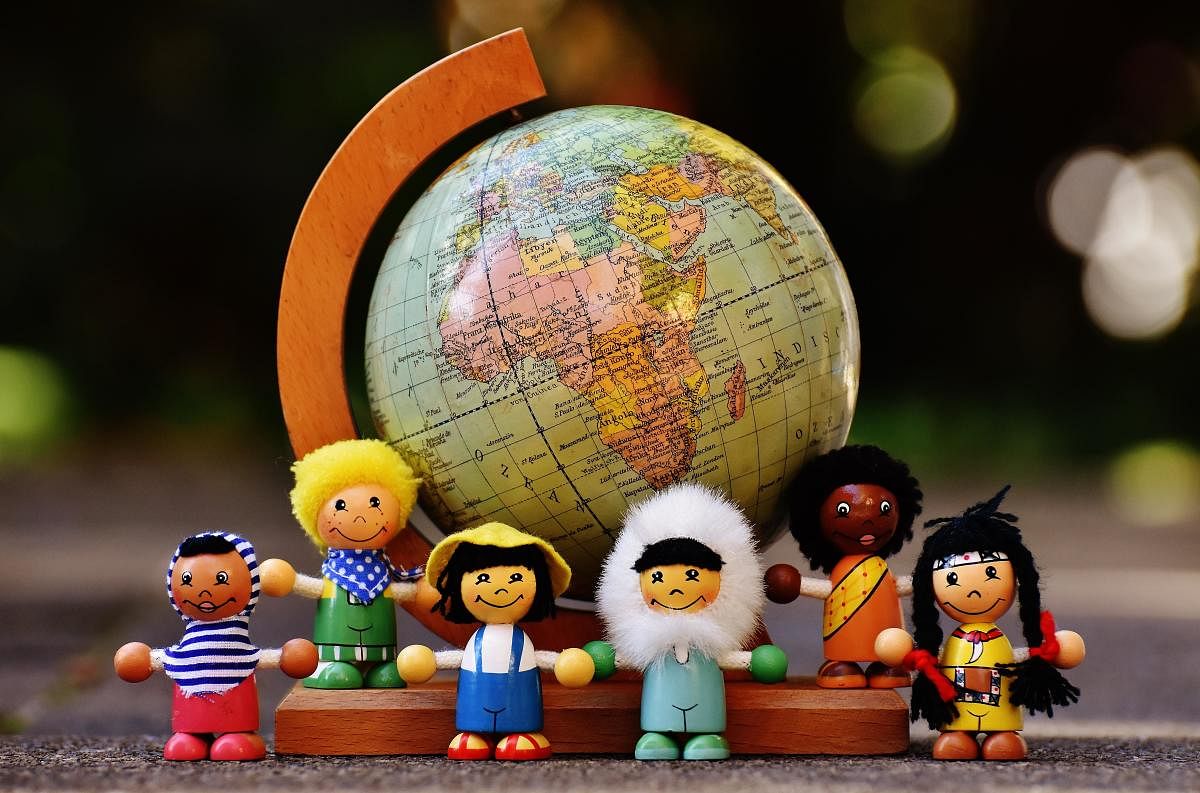
There’s an easy way to judge if a house has a boy child or a girl child — by a simple daily occurrence. If on a visit to the family you trip and fall over a toy car, it indicates there’s a boy in the house. If you trip over a doll, surely a girl is around somewhere.
After centuries of such biased conclusions, some child psychologists have begun to fight against stereotyping toys for boys and girls, and nowadays things are changing. Parents may well trip and fall over a non-gender specific, ambisexual, neutral play object, like a toy robot left in the hallway, bringing the concept of political correctness to the world of toys. Indeed a victory for gender activists, who are worried about how boys and girls are raised differently.
A history of toys
The kids of Mr and Mrs Neanderthal made little distinction between boy toys and girl toys, as there was just one universal toy for all babies then: called a bone. But when the wheel was invented, boy children began placing the bone on a miniature wheel and zoomed it around. Girl children, following a primal instinct, rocked the bone to sleep. As toy-making became commercialised, these boy-girl instincts became the basis for two landmark inventions, called Hot Wheels and Barbie dolls.
They became worldwide obsessions. Little boys craved more and more Hot Wheels in the form of cars, buses, police vans, ambulances, army tanks, tow trucks, train sets, planes, and battleships. Little girls longed for Barbie dolls and everything to pamper them like bathing tubs, cooking sets, makeup kits, wardrobes, tea party sets, beauty parlours... Soon, many parents sold all their furniture to make space for entire rooms turned into toy parking lots or complete Barbie households. Some extreme cases even rented the house next door to actually live in.
A gender-neutral toy story
Two revolutionary inventions marked a radical change in the gender-neutral toy industry. The first was an idea stolen from a grandmother’s kitchen: she was making chapatis when her grandchildren made off with a round lump of dough to make funny shapes. Soon the world was hit with playdough, and a toy conglomerate with bad writing skills (Toys R Us, with R written backwards) but great business acumen made millions selling lumps of coloured dough to crazed children, who reshaped them mostly into their own artistic coloured lumps, with parents exclaiming “Good job! You made a great lump!”
The second revolutionary idea was from the Danish company Lego. By selling only the parts of the toy — thousands of stackable coloured plastic bits — it was a valuable tool in decision making. It became the easiest decision for confused aunts and uncles (“Look! I bought you a car! Or a doll! Or a spaceship! Or a pizza! Or an apartment block! Or a Taj Mahal! YOU decide!”); while helping curious two-year-olds decide if Lego pieces flushed down the toilet, sink or float.
With modern parenting evolving into an intensely interactive activity, buying toys today has become a life-shaping event, from those simple days when Neanderthals lazily tossed a bone at a bawling kid.
For instance, relatives and friends carrying gifts from afar for a newborn can go beyond bringing gold, frankincense and myrrh, as was popular in Biblical times, and instead give long-term mutual funds and cryptocurrencies.
Or if parents prefer quaint old-world gifts, they could use a spherical bouncing object, to give their toddler an edge over others for Class 7 Physics exams later in life: by introducing baby to Uncle Newton… and what did he discover? “Gravi-THEE and Momen-THUM”! lisps the bright two-year-old bouncing the ball up and down.
The colours of a Rainbow jigsaw puzzle are a great primer to educate pre-schoolers about living in a world of diversity. As the child fixes the alphabets LGBTQ below the rainbow, the parent claps in approval...
Ambitious parents of kindergarten kids set on Harvard can now give their child an early head start in managing future colleagues, as boring old fashioned games have been modified to Snakes & Corporate Ladders.
What kids really want
Meanwhile, what does any little fun-loving kid, boy or girl, really really want? After an extensive research project that involved close observation and study of several small children all around the world, I have found the answer. A toy that cuts across genders, race, colour, countries, religion, beliefs, income, language, upbringing, trends, advertising, cravings, and tantrums.
It’s called packaging. Or the empty cardboard box after any object is taken out. Every kid in the whole wide world gleefully spotting an empty cardboard box sees this as a house, a ship, a cart, a den, a zoo, a car park, a palace, a jail, a hiding place…a fantasy world of endless possibilities.
In fact, I am in talks just now with Amazon to sell/deliver only empty cardboard boxes as toys. Watch out for me in Shark Tank soon as I pitch my new toy idea that’s going to revolutionise the world of unisex toys!
(He Said/She Said is a monthly column on gender issues— funny side up. The author switched to a career in Advertising/Travel Writing as world markets may have collapsed if she ever became an economist. Reach her at indubee8@yahoo.co.in)